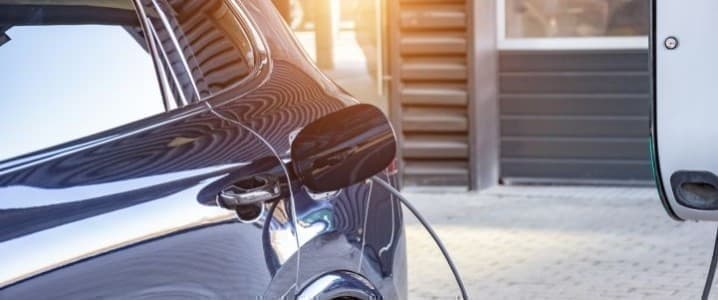Three years ago, the Biden-Harris administration set an ambitious goal to have up to half of all new vehicle sales in the country electric by the year 2030 as part of the government’s mission to achieve a net-zero emissions economy by 2050. Not long after, New York state doubled down and announced it will ban the sale of new gasoline-powered vehicles by 2035. However, last year’s reports regarding a shortage of electric vehicle (EV) charging stations across New York City raised serious doubts about the practicality and achievability of those goals. According to the city of New York's last credible report in 2020, the city is home to a mere 1,500 public charging plugs compared to the ~40,000 additional charging plugs it requires by 2030 to phase out gas cars.
The ongoing frigid weather in much of the country has exposed yet another Achilles heel of the EV revolution: cold weather is the kryptonite of electric vehicles.
A study by the American Automobile Association (AAA) found that an EV can lose as much as 12% of its range when temperatures drop to 20 degrees, a figure that shoots up to 40% if you turn on the cabin heater. To put it another way, for every 100 miles of combined urban/highway driving, the range of an EV at 20°F would be reduced to 59 miles. These figures vary according to the EV model, with a BMW 13s suffering an average 20.4% reduction in range at 21 F in combined HVAC on/off scenarios; Tesla Model S 75D sees a 11.3% deterioration while a Volkswagen 3-golf only loses about 6.9%.
The ideal operating temperature range for an EV battery is considered to be between 68 and 86 degrees, depending on the model. When a battery charges, lithium ions stored in the cathode are transferred back to the anode. In cold charging conditions, the ions flow less efficiently through the anode thus taking a toll on the battery's capacity. Related: Exxon Looks to Tap Guyana's Gas Riches
To make matters worse for EVs, charging times can double or even triple for older EVs. Low temperatures, therefore, make the chemical processes that electric vehicle batteries use to store and generate energy slow down, leading to reduced battery performance and increased charging times.
It’s a nightmare scenario for Uber and taxi drivers:
“When I should be asleep, I’m outside charging my vehicle, falling asleep in my car. I’m not making any money,” Marcus Campbell, an Uber driver in Chicago, has told NBC News.
To be fair, the performance of ICE vehicles also suffers when temperatures plummet, with the U.S. Department of Energy reporting that the gas mileage of a conventional gasoline car is 15% lower at 20 degrees than at 77 degrees. But, obviously, EV drivers are having it far much worse in the sub-freezing conditions reaching as far south as Texas and Florida.
Rapid EV Adoption
Currently, less than 2% of all vehicles in the United States are electric, so the vast majority of drivers are not panicking that their vehicles might run out of juice sooner than expected. Further, the Golden State of California, where extreme cold is uncommon, is leading the country in EV sales.
However, that is rapidly changing. In 2023, a record 1.2 million EVs were sold in the United States, good for a robust 51% Y/Y increase. In the same year, the EV share of the total U.S. vehicle market rose to 7.6%, up from 5.9% in 2022. The proportion of people buying electric vehicles has been trending higher for years: EV sales in the fourth quarter set a record for both volume and share, at 317,168 and 8.1%, respectively.
Thankfully for EV bulls, the Arctic blast is unlikely to slow down the EV revolution thanks in large part to one powerful secular trend: falling lithium prices.
Lithium carbonate prices have crashed spectacularly from an all-time high of CNY 592,500 per tonne ($82,295/tonne) in November 2022 to CNY 97,500 per tonne ($13,550/tonne) currently due to a deluge of supply coming online over the past couple of years.
An EV’s powertrain constitutes as much as 70% of its sticker price, and falling lithium prices played a part in bringing down the average cost of EVs by 18% in 2023.
In the meantime, lithium stocks are plunging–fast, with fears of further deterioration as miners struggle to raise money.
Earlier this month, Australia-based Core Lithium Ltd. said it would halt mining at its Grants open pit mine until conditions improve, and altered shareholders to a potential asset writedown.
“Through 2022 and in early ‘23, we took money off the table in lithium as the price spiked well beyond the cost curve,” AustralianSuper fund senior portfolio manager Luke Smith told Mining.com.
But that has also sparked some potential opportunities, Smith suggested, with AustraliaSuper now looking to take advantage of the plunge.
“Clearly, we’re seeing now the opportunity become more attractive,” Mining.com quoted him as saying.
By Alex Kimani for Oilprice.com
More Top Reads From Oilprice.com:
- Canada's Uranium Is Fueling the World's Nuclear Energy Boom
- AI's Massive Power Consumption Demands Innovative Energy Solutions
- U.S. Offshore Wind Projects Hit by Surging Costs

















